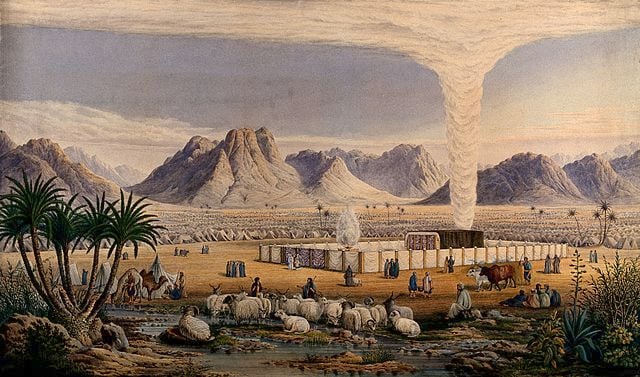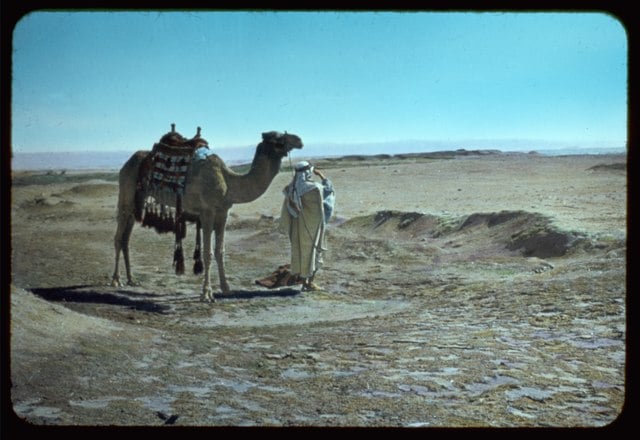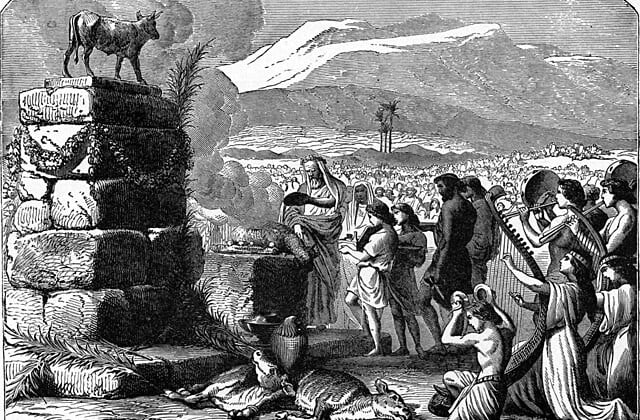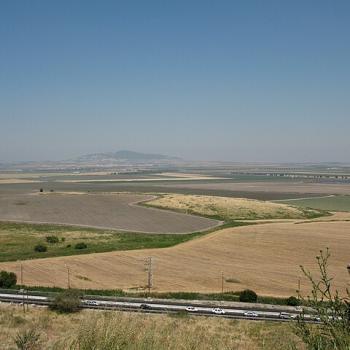
The Israelites’ escape from slavery in Egypt provides one of the most familiar and exciting stories in the Old Testament. But getting out from under Pharaoh’s thumb did not provide God’s people with an immediate happy ending. After gaining their freedom, the former slaves then spent forty years wandering in the wilderness en route to the Promised Land. While difficult, this experience proved valuable, and, in retrospect, the worth of wilderness wandering is evident.
The Story of Wilderness Wandering
The term wilderness wanderings refers to the 40-year period between the Israelites’ exodus from Egypt and their entrance into Canaan, the Promised Land. The books of Exodus, Leviticus, and Numbers primarily provide the account of this journey through the desert. God’s people made this trek in stages, which Moses recorded at God’s command. This information can be found in Numbers 33.
Reading the numerous places in Numbers 33 where the Israelites stopped on their journey, the trip would appear to be a great distance. Although the Israelites took forty years to complete their travel, in actuality, it should have been only an eleven-day trip.

Were They Wandering in the Wilderness?
Because of the prolonged duration of the Israelite’s trip, the adjective “wandering” commonly describes their journey. But a closer look reveals that adjective is not appropriate. The dictionary definition of “wandering” indicates it involves walking around slowly, in a relaxed way, or without any clear purpose or direction. The Israelites did indeed have both direction and a clear purpose. The purpose of their trip was to get to the Promised Land. And none other than God Himself served as their travel guide, commanding them where to go according to Exodus 17:1.
The geography of the route taken to the Promised Land offers a good reason to label this f0rty-year journey as being in the wilderness. The Israelites dealt with not one, but six wilderness areas on their way to Canaan. These include the wildernesses of Shur, Etham, Sin, Sinai, Paran, and Zin.
Where The Israelites Wandered
The Israelites encountered the Wilderness of Shur early in their journey to the Promised Land. A desert region east of Egypt, it served as a natural barrier between that country and lands to the east such as Canaan. The Wilderness of Shur presented harsh and arid conditions with difficult terrain and few resources. In particular, a lack of water posed an issue for the Israelites. They next moved to the Wilderness of Etham, although scholars debate its exact location. The Israelites continued on to the Wilderness of Sin where they grumbled about the lack of food. Moses struck a rock to bring forth water in the Wilderness of Zin.
In the Wilderness of Sinai, the location of Mount Sinai, God provided the Law to Moses. Finally, the last wilderness God’s people traversed was the Wilderness of Paran. This desert area sat in the northeastern part of the Sinai Peninsula reaching into the southern Israel of today. Its rugged terrain served as the base for the Israelites as they prepared to enter the Promised Land. From this area, the twelve spies left to scout out Canaan.

Figurative Wilderness Wandering
In addition to passing through physical wilderness areas headed to Canaan, the Israelites experienced a spiritual wilderness as well, a time of spiritual struggle and growth. Their multi-decades long wilderness wandering served as both divine judgment and a test of their faithfulness. In that vein, the wilderness symbolized a place of testing, preparation, and purification.
Three reasons support the reason for the forty-year delay for the Israelites to reach the Promised Land. These include their lack of faith in God, their disobedience, and their idolatry. Despite God’s rescuing them from the oppression of Egyptian slavery, the Israelites doubted God’s ability to provide for them in the wilderness. They disobeyed His instructions, such as gathering more manna than directed. And God’s people began to worship a golden calf when Moses was meeting with God on Mount Sinai to receive the Ten Commandments.

Was It Worth It?
When faced with the trials of wilderness wandering, the Israelites experienced God’s provision and guidance. He met the Israelites’ physical needs in miraculous ways. Manna from heaven supplied them bread. Quail gave them meat, and water water miraculously came from rock.
Without maps or GPS, navigating the trip to the Promised Land was likely challenging. But God showed His people the way to go, guiding them with a pillar of cloud by day and a pillar of fire by night. These pillars symbolized God’s protection and leadership of the Israelites, providing them with both direction and reassurance. God’s presence never left them, despite their grumbling, unbelief, and outright disobedience. These wilderness wanderings offered essential lessons in trusting God and also in obeying Him.

The Worth of Wilderness Wandering Today
The narrative of the Israelites’ exodus from Egypt and long, difficult journey to the Promised Land should provide great comfort to believers today. God proved faithful to His children during that past challenging forty-year time, coming through even when they failed or disappointed Him. It may have taken longer than the Israelites thought necessary to reach Canaan, but the lengthy trip offered countless opportunities to witness God’s continuing guidance and protection. The worth of wilderness wandering? A stronger faith in God.


















